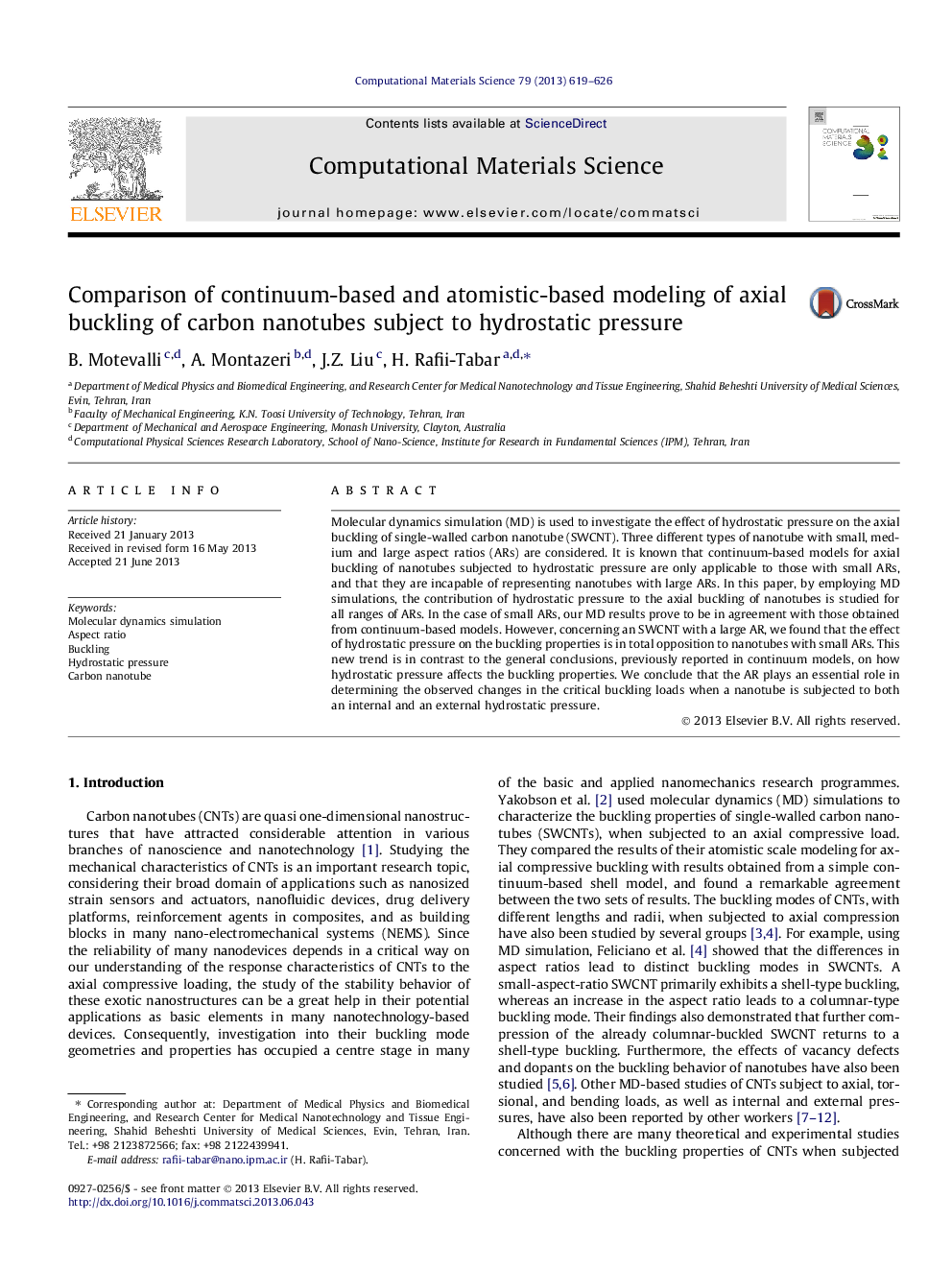| Article ID | Journal | Published Year | Pages | File Type |
|---|---|---|---|---|
| 7961671 | Computational Materials Science | 2013 | 8 Pages |
Abstract
Molecular dynamics simulation (MD) is used to investigate the effect of hydrostatic pressure on the axial buckling of single-walled carbon nanotube (SWCNT). Three different types of nanotube with small, medium and large aspect ratios (ARs) are considered. It is known that continuum-based models for axial buckling of nanotubes subjected to hydrostatic pressure are only applicable to those with small ARs, and that they are incapable of representing nanotubes with large ARs. In this paper, by employing MD simulations, the contribution of hydrostatic pressure to the axial buckling of nanotubes is studied for all ranges of ARs. In the case of small ARs, our MD results prove to be in agreement with those obtained from continuum-based models. However, concerning an SWCNT with a large AR, we found that the effect of hydrostatic pressure on the buckling properties is in total opposition to nanotubes with small ARs. This new trend is in contrast to the general conclusions, previously reported in continuum models, on how hydrostatic pressure affects the buckling properties. We conclude that the AR plays an essential role in determining the observed changes in the critical buckling loads when a nanotube is subjected to both an internal and an external hydrostatic pressure.
Related Topics
Physical Sciences and Engineering
Engineering
Computational Mechanics
Authors
B. Motevalli, A. Montazeri, J.Z. Liu, H. Rafii-Tabar,
